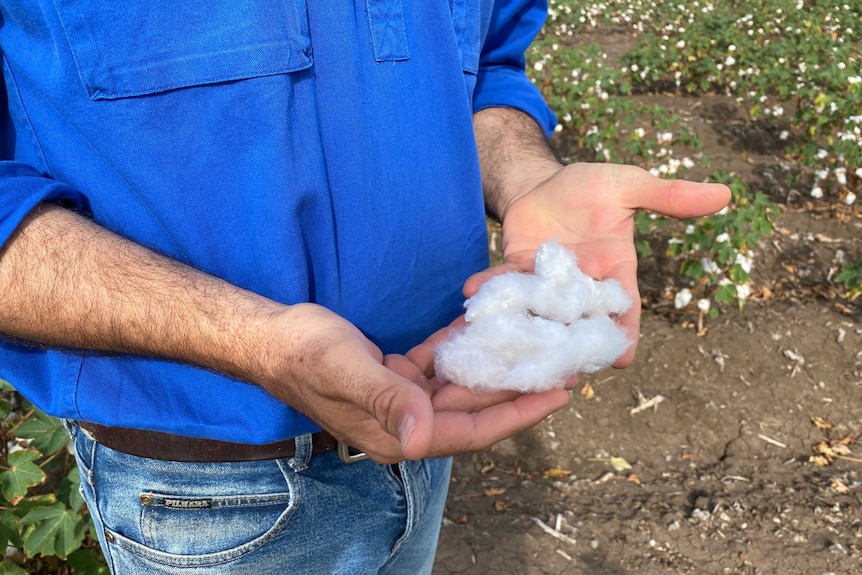Aussie cotton industry aiding shift towards sustainable fashion

Fashion-savvy consumers are becoming increasingly environmentally conscious, forcing Australian brands to produce clothes with a lighter environmental footprint.
Key points:
- Environmentally conscious consumers are driving fashion brands to focus more on sustainability
- Some brands are turning to Australian-grown cotton, which has improved its water use in recent years
- Enough Australian cotton is set to be grown this season to clothe up to half a billion people
(ABC News Australia) – As synthetic fabrics like polyester and acrylic are shunned for natural fibres, the cotton industry is cashing in.
Cotton Australia predicts Australian growers will produce enough cotton next year to theoretically clothe 500 million people.
“That’s a lot of fibre that we’re talking about producing, a million tonnes,” Cotton Australia chief executive Adam Kay said.
Cotton has long had a reputation for soaking up lots of water, but changing practices have seen cotton become the fabric of choice on the catwalk.
Fabia Pryor, Country Road’s brand community and impact manager, said sourcing fabric with a sustainable pedigree was important.
“We source Australian cotton because we … know Australian farmers are leaders in water efficiency in their use of drought-resistant cotton varieties,” she said.
In the world of fast fashion, traceability has become a huge selling point.
Ms Pryor said brands worked with international companies like Oritain to scientifically verify the origin of products.
“Some of our Australian cotton is verified using our Oritain-verified partnership, which can scientifically trace the fibres back to Australian farms, enabling us to trace back to farms that practise better land management,” she said.
With better quality products, however, come higher prices, but Ms Pryor said consumers were not afraid to pay more for peace of mind.
“We know 64 per cent of Australian consumers indicate they are supportive of on-shore manufacture even if it’s more expensive,” she said.
Sustainable farming practices
Graham Volck is a cotton farmer based near Emerald in central Queensland.
It’s an area gripped by ongoing drought, but Mr Volck has found a new way of growing cotton with less water.
The strategy, called walk-away cotton, involves using water when it becomes available and then waiting for either rain or more allocation out of the local dam.
“We’ll plant about 60 per cent of our area, we’ve got enough water just to flush it up, start it, and then we’ll walk away from that cotton crop until we get some rain or allocation,” Mr Volck said.
“We plant whatever we can with whatever water we have remaining and then we just leave that to grow.”
It’s a risky strategy, especially when the rain and water allocation do not arrive in time, but Mr Volck said farmers had to adapt when conditions were tough.
“I think we’ve honed our skills on how to grow it in a drought, and some of those techniques we’ve used will carry forward when we have full allocation,” he said.
“We’re gaining more confidence in it.”

Enough cotton to clothe millions
Cotton Australia’s prediction of a bumper 2022 is a remarkable turnaround for the industry after recording one of its smallest crops on record in 2020.
Mr Kay said better water use had improved the sustainability of the industry as a whole.
“Our growers have been innovating over the past 20 years and we can clearly demonstrate that we’ve improved our water use efficiency by 50 per cent in the past two decades,” he said.
“So, we’re growing a lot more cotton with each megalitre of water.”
Ms Pryor said cotton deserved to shrug off its lingering public image as a thirsty crop.
“We know the cotton industry in Australia has really come together, working with the likes of CSIRO, to develop mechanisms to make sure that we are having the lowest environmental impact,” she said.
“It’s a work in progress, as all of these sustainability journeys are.”












